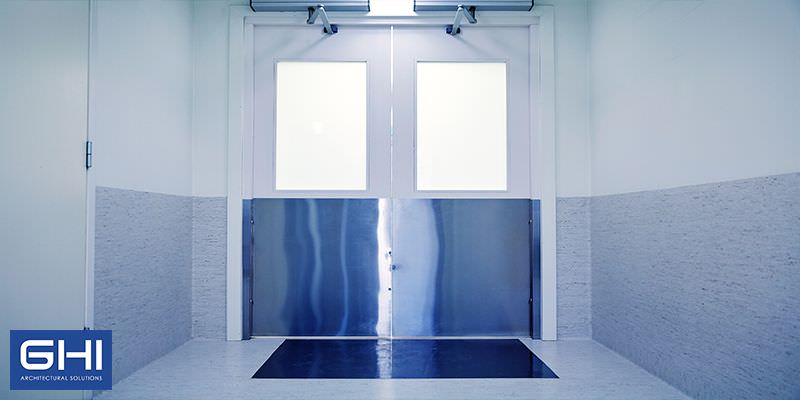When One Door Closes….Let’s Hope You Have A Door Closer!
We all know the old adage, “When one door closes, another one opens,” and the witty, somewhat tongue-in-cheek alternative: “When one door closes, another one slams in your face!” Well, not if you have a door closer installed! In fact, it’s a mystery why every door in every building doesn’t have one!
A door closer is an incredibly useful piece of engineering. We’re probably all familiar with them from hospital and hotel visits, and they’re an essential component of emergency exit doors in a multitude of public buildings.
Increasingly though, homeowners too are discovering the benefits of installing automatic door closers in their homes. How many times have you asked your children, “Were you born in a barn?” because they raced out of the house and neglected to close the door behind them? Or what about those windy days when you have the windows open for fresh air, but then all the doors in your house systematically slam? And we can all surely relate to struggling through the front door laden with groceries, only to have to put everything down to close the door behind us.
Modern homes have soft-close toilet lids and self-closing drawers. Even our cars have boots that open and close automatically. No one can deny that these are all extremely pleasant and convenient additions to our lives. Why then, do we not have door closers on the doors in our home?
Choosing The Right Door Closer
One of the great things about door closers is that they can be fitted to most doors, either in new homes at the time of construction, or in existing homes with doors that are already in place.
The type of door closer you choose depends on a number of factors, including:
- Building specifications
- Location, size and weight of the door
- How often the door is opened and closed
- Required backswing
- Where on the door the closer will be mounted
- Price
When choosing your door closer, it helps to understand the different benefits of the various types, as this will help you to match your doors to the right closers. Although door closers are convenient to have on any door in your home, they are particularly useful in high traffic areas. For doors that are opened and closed multiple times a day, floor-spring door closers are generally your best option. They are also not as visible as overhead closers, which are better suited to medium-traffic locations.
Aesthetics can also play a role in which door closers you choose. Some mountings are less visible than others, making them more suited to home environments. Whichever type you choose, however, most are adjustable, so you can choose your own preferred opening resistance and closing rate.
Types Of Door Closers
There are many types of door closers available, but the overhead ones are the most widely used – particularly in commercial buildings, on front doors, boardroom doors and conference room doors. There are three main types of overhead door closers:
Regular or Standard Arm
This is the most power-efficient option and is located on the exterior, or “pull side” of the door. It comprises two arms – one attached to the door frame and one to a spring-loaded box. When the door is closed, the arms stick out perpendicularly, making it more suited for commercial, rather than residential, applications, as it is less aesthetically pleasing.
Top Jamb
This also has arms that stick out perpendicularly, but the difference here is the spring-loaded box is mounted on the face of the doorframe. Top jamb door closers are ideal for aluminium or glass shop front doors, which typically have narrow top rails.
Parallel Arm
This has two arms that, when the door is closed, sit on top of it. This particular arm geometry makes them less power efficient than the other two closers, but they are perfectly suited to schools and commercial properties as there is less likelihood of the arms being vandalised.
Other Types Of Door Closers
Surface Mounted
These closers are fitted to the door frame itself, with a bar that goes along the back of the door. They are usually quite small and can be colour-matched to your door.
Concealed
Concealed door closers fit into recesses in the door and frame, making them invisible when the door is closed. They are ideally suited to interior doors as they are quite light, and you can choose between spring-loaded or hydraulic options.
If you’re a building owner, architect or property developer, this is probably all a little overwhelming. At GHI Architectural Solutions, we have a wide range of door hardware to meet all your requirements. We also have a team of knowledgeable consultants standing by to help and answer any questions you might have. Why not chat to us today?

